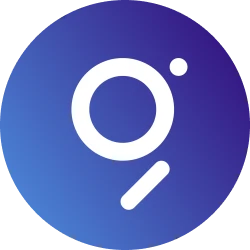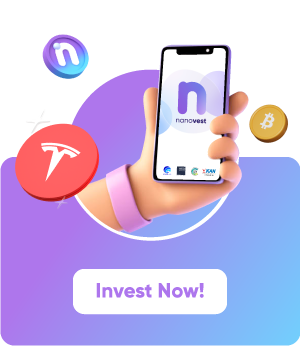
The Graph is a decentralized protocol designed for indexing and querying blockchain data. It enables users to effectively query data that would otherwise be challenging to access directly.
Kalkulator The Graph ke Rupiah (GRT to IDR)
Konversi Harga The Graph hari ini ke dalam Rupiah sebaliknya.
Key stats
Market Capitalization
IDR 16.765.903.726.277
Trading volume 24H
IDR 1.190.767.382.485
Volume / Market Cap
7,10231552038989999431 %
Fully Diluted Valuation
IDR 18.942.246.945.240
All time high
IDR 39.712
Circulating supply
GRT 9.548.531.509
Max supply
GRT 10.788.004.319
Total supply
GRT 10.788.004.319
About The Graph (GRT)
The Graph (GRT) is a decentralized protocol built on Distributed Ledger Technology (DLT), aiming to gather blockchain data without the involvement of intermediaries. This protocol functions as a universal API for sorting, categorizing, and retrieving data, utilizing the GraphQL programming language for streamlined processing.
By launching The Graph mainnet, the project initiates a pathway towards complete decentralization of applications, establishing a network of service providers where decentralized apps can operate independently while ensuring easy accessibility to blockchain data. Through openly available APIs called subgraphs, numerous decentralized applications can function within the network, already hosting hundreds on The Graph mainnet.
The Graph conducted both public and private sales, generating $12 million from the public token sale and an additional $5 million from a private sale supported by prominent investors such as Coinbase Ventures, Digital Currency Group, Framework Ventures, and Multicoin Capital, which contributed $2.5 million.
The network relies on nodes to uphold The Graph mainnet, fostering an ideal environment for decentralized applications and developers. Indexers, curators, and delegators engage in the marketplace using GRT tokens, the native cryptocurrency of The Graph network, which serves to allocate various resources within The Graph ecosystem.
The Graph (GRT) Working Mechanism
As the popularity of DeFi (decentralized finance) continues to rise, The Graph protocol is gaining prominence within the broader cryptocurrency ecosystem. This protocol empowers developers and participants in the network to leverage public and open APIs for constructing subgraphs tailored to various decentralized applications (dApps), facilitating querying, indexing, and data collection. In April 2021 alone, The Graph’s hosted service handled an impressive 20 billion queries.
At the core of the network is the Graph Node, which scans the blockchain database utilized by network participants to effectively organize data. Utilizing GRT tokens, developers and network participants can both pay for and create subgraphs. By indexing data, developers can establish the data’s structure, specifying how it should be utilized by dApps. Indexers play a crucial role in creating a decentralized market for queries, where consumers can utilize services available on the network by paying in GRT.
The network is designed to be supported by delegators, indexers, and curators, who offer curation and indexing services to consumers in exchange for GRT tokens. This incentivizes market participants to continuously enhance APIs and provide accurate data. Within The Graph Network’s framework, consumers querying subgraphs can remunerate network participants in GRT tokens through a designated gateway. Indexers, as node operators, stake GRT tokens to facilitate indexing and querying. Users of the network can develop and utilize applications on Ethereum, IPFS, and PoA via GraphQL, with the potential for additional networks to become accessible in the future.
Uniqueness of The Graph (GRT)
The launch of The Graph network marked a significant milestone as the pioneering blockchain project of its kind. Serving as the inaugural decentralized marketplace tailored for querying and indexing data for decentralized applications (dApps), The Graph boasts a distinct utility within the blockchain and cryptocurrency sector, which may be reflected in its price dynamics.
The project’s uniqueness is underscored by its core objective of furnishing easily accessible data to consumers within The Graph network. Operated with the collective support of network participants, Indexers assume the pivotal role of node operators, thereby establishing a distinctive market for indexing and querying data sourced from various blockchain networks like Ethereum.
Positioned as the premier decentralized marketplace, The Graph addresses the challenges associated with dApp creation, particularly concerning indexing hurdles and proprietary concerns. This distinctive approach sets The Graph apart within the realm of blockchain innovation.
Advantages and Disadvantages of The Graph (GRT)
Advantages
- Convenient: The Graph streamlines the querying of all blockchain data through its utilization of subgraphs, offering a seamless experience for users.
- Cost-effective: Prior to The Graph, developers faced the expense of building private query services or relying on costly third-party data sources. The Graph mitigates these expenses.
- Potential: The Graph exhibits promising potential for exponential growth as it continues to integrate additional platforms, dApps, blockchains, and smart contracts into its expanding index.
Disadvantages
- Few Blockchains Supported: As a relatively nascent network, The Graph’s support for various blockchains is limited. Nevertheless, it has already incorporated many major blockchains such as Polygon and expanded to include non-EVM blockchains like Near, highlighting its commitment to network expansion.
- Not Fully Decentralized: The Graph’s reliance on the Hosted Service for supporting most subgraphs means it is not entirely decentralized. However, the team is actively working to achieve full decentralization of the data indexing process through initiatives like the decentralized Graph Explorer, launched in July 2021.
Features of The Graph (GRT)
1. Decentralized Querying
The Graph revolutionizes the querying and indexing of blockchain data by decentralizing the process. Unlike centralized databases, which are vulnerable to single points of failure and censorship, The Graph distributes this function, thereby enhancing security and reliability.
2. Open APIs (Subgraphs)
Developers have the ability to create and publish subgraphs, which serve as open APIs. These subgraphs extract data from blockchain sources, process it, and efficiently store it for retrieval.
3. GRT Token
GRT serves as the native utility token of The Graph ecosystem. It plays a crucial role in resource allocation within the network. Indexers, curators, and delegators utilize GRT to offer services and earn rewards, thus ensuring the economic sustainability of the ecosystem.
4. Use in DeFi and Web3
The Graph is extensively utilized in DeFi and Web3 applications for data indexing and querying purposes, establishing itself as a foundational technology within these sectors.
Key Figures in The Graph (GRT)
The Graph was established in 2018 by Yaniv Tal, Jannis Pohlmann, and Brandon Ramirez, who had previously collaborated on multiple startups concentrating on developer tools.
Since 2019, The Graph has accumulated a total of $19.5 million through token sales. Notably, it raised $10 million during its public sale in October 2020. Approximately 21% of the initial token supply of 10 billion GRT has been sold to investors, which include prominent names such as Coinbase Ventures, Digital Currency Group, and Multicoin Capital.
History and Development of The Graph (GRT)
Founded in 2018 by Yaniv Tal, Brandon Ramirez, and Jannis Pohlmann, The Graph emerged from Tal’s personal challenges in developing decentralized applications (dApps) on Ethereum. Recognizing the absence of a comparable solution in the market, Tal and his team embarked on creating The Graph, aiming to introduce the first decentralized indexing and querying application.
In 2020, The Graph achieved a significant milestone with the launch of its mainnet, marking a significant stride towards fully decentralizing dApp utilization. This launch also spurred an uptick in the generation of subgraphs within the network. The overarching objective of the project is to democratize access to Web 3, empowering individuals to develop dApps without reliance on servers or centralized authorities.
How to Buy The Graph (GRT)
Interested in purchasing this particular crypto asset? You can buy The Graph (GRT) by following these steps:
- Install Nanovest app on the App Store or Play Store.
- Register according to the instructions.
- Verify your identity for security and convenience when buying crypto through the KYC feature which you can do in just 1 minute.
- Top Up your balance to your Nanovest account.
- Go to the Crypto menu, search and select The Graph (GRT).
- Click the Buy button and confirm the purchase with your desired amount. You can start with only IDR 5,000.
Before investing in the crypto asset, be sure to conduct research and analysis first. You can do this by checking the crypto asset profile, industry conditions, monitoring price movement trends, and observing its liquidity and trading volume. Performing this analysis is crucial so you can formulate an accurate investment strategy and minimize losses.
Is it Safe to Buy The Graph (GRT) on Nanovest?
Absolutely. Nanovest is supported by a number of professional partners with a strong reputation for providing quality services. One of these includes the technology backing of the S-Quantum Engine by Sinarmas Financial Services.
For global and US stocks, Nanovest collaborates with brokers registered with the Financial Industry Regulatory Authority (FINRA) in the United States – which ensures Nanovest users’ broker accounts up to US$500k by the Securities Investor Protection Corporation (SIPC) in the United States.
As for crypto assets, Nanovest is an Indonesian crypto exchange registered with the Commodity Futures Trading Regulatory Agency (Bappebti). The Nanovest platform itself is also insured through a partnership with Sinarmas Insurance.
Disclaimer
All content on this website is for informational purposes and doesn’t constitute a recommendation to buy/sell any stock or crypto. Investors should understand the nature of stocks and digital assets, including return and risk requirements of the assets. We encourage investors to fully understand the assets and risks before making any investment. Always do your own research.

